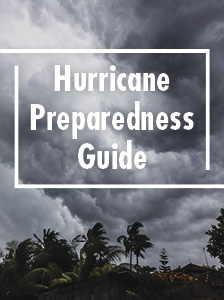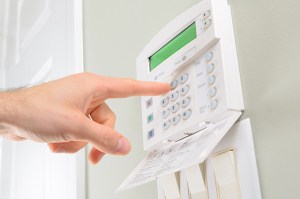For many Americans, the backyard deck is a favorite recreational area to get together with family.
It doesn’t feel like a dangerous place, but if it’s not built correctly or properly maintained it could become one. Collapses and failures of decks, porches and balconies accounted for about 2,900 injuries between 2016 and 2019, according to the most recent research from the Consumer Product Safety Commission.
Let’s explore some of the culprits that might be making your deck unsafe and what you can do to address these potential issues.
Dangerous Backyard Decks Are More Common Than You Think
Injuries due to collapsing or unsound decks often occur because a deck is either built in a way that violates current housing codes or has deteriorated over time.
If your deck was built before 1980, it’s likely that it was made with wood that wasn’t properly treated to prevent termite infestation. Aside from this, the average lifespan of a deck is around 15 years. If your home has a backyard deck that was built 30 or 40 years ago, make sure to have it inspected by a professional to identify and fix any hazards.
If you’re planning on spending time and dining out on your deck with family and friends, it’s especially important to make sure it is in top shape ahead of time. It’s never a good idea to test the limits of an old deck and put your loved ones at risk.
How to Inspect Your Backyard Deck for Wood Damage
If you built your deck yourself, it was constructed more than 15 years ago or if you simply suspect it might not be in the best shape, take some time to inspect the wood and other elements. One of the most obvious signs that your backyard deck is damaged is if you notice large cracks in the boards or posts, which could lead to more serious issues down the road.
You should also check the entire deck for rotting wood and termite holes. While it might not be obvious at first, use a screwdriver to poke around in any areas that look weak. If the wood feels spongy or soft inside, you’ll need to remove the rotten area and consult a professional to evaluate the extent of the damage.
Rotting wood can be caused by water damage and fungi, and in general, the elements can take a toll on wood over time. After all, your deck is subject to the weather 24/7; rain, snow, sun and wind can all be factors in causing your deck to decay, especially over decades of exposure and without proper maintenance.

Structural Signs Your Backyard Deck Might Be Unsafe
Pay close attention to any strange noises or movements you notice while spending time on your backyard deck, such as loud creaking, warped or weak boards and wobbly railings. While a weak railing might not seem as crucial to fix as the main body of the deck, these can pose a particular hazard for children or the elderly. If a piece of the railing suddenly becomes loose, people are at risk of falling. In the same way, make sure to keep a close eye on the stairway to verify the steps aren’t loose or damaged.
Examine your deck to confirm it has the proper structural connections. If you don’t see the standard bolts and metal connector plates supporting your deck and only see nails, your deck is structurally unsound. Finally, take a look at the wood posts supporting the weight of your deck and make sure they’re not off-center on their concrete footing. If you don’t have any concrete footing at all and your posts are touching the ground, this is usually a coding violation.
Insurance Considerations
“If someone were to get injured on your deck, your homeowners liability coverage should cover that up to the limits. If you have sufficient underlying limits and an umbrella policy, the umbrella policy would also provide excess coverage if that’s needed,” said Ray Eng, vice president of insurance sales at AAA Northeast.
Eng advises homeowners to have their backyard deck inspected before any problems arise. If you suspect your deck shows any of these warning signs, don’t attempt to handle the problem yourself. Hire a professional who’s familiar with the coding laws in your area.
Although it might seem like a hassle to have repairs done on your deck when you’d rather be barbecuing, you’ll feel better knowing your family is safe from danger.
Learn more about AAA home and condo insurance in your state.
4 Thoughts on “Is Your Backyard Deck a Safety Hazard?”
Leave A Comment
Comments are subject to moderation and may or may not be published at the editor’s discretion. Only comments that are relevant to the article and add value to the Your AAA community will be considered. Comments may be edited for clarity and length.


















Very good article, I can relate to this. I was doing a repair visit at a customers house, they just had a new deck installed, a few years later I had another repair visit at the same customer, he was now cursing his deck, among other things the deck bounced when people walked over it, his wife had broken several pairs of high heeled shoes in the ever widening cracks, the list went on. Well in-between visits I had built my own deck and I knew what his problems were. The first thing I showed him was the top of the deck, how some boards were cupped because they were installed the wrong side up, then we went under his deck, I explained to him what Teco hardware was, and then showed him how the builder had simply nailed joists and support beams, sometimes with just a single nail, causing the deck to bounce. Of course the previous contractor was out of business and I said I couldn’t do it because I wasn’t a licensed contractor but I did give him all the information I could about teco parts and to go to a local lumber supply place and get information.
Give us more like this.
Excellent Article
Thanks Allan!